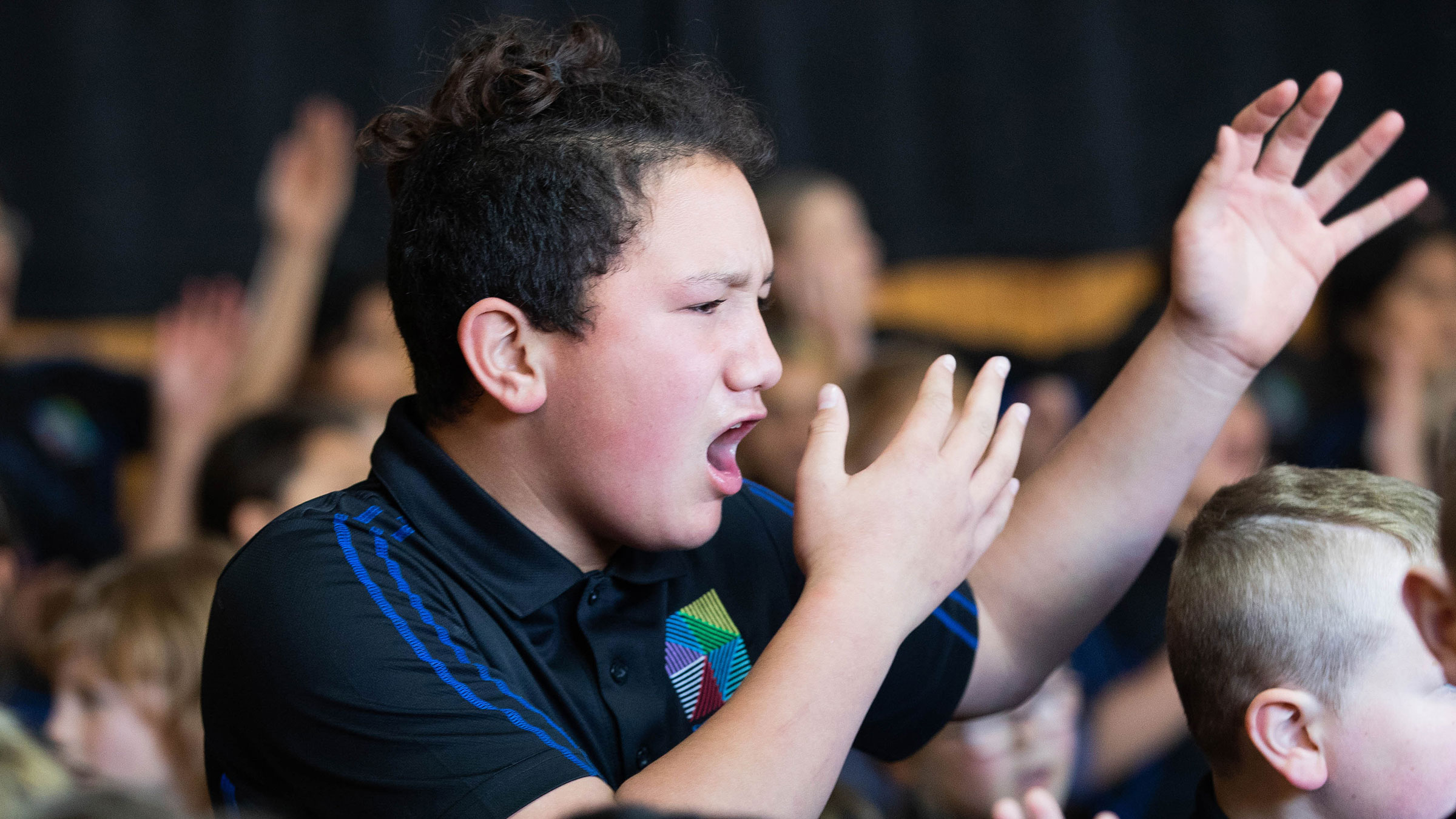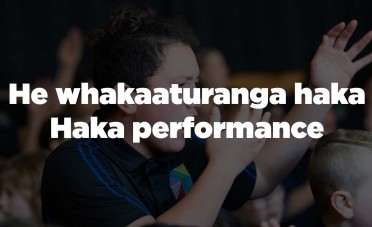Te tito i tētahi haka Composing a haka
Explore, describe and experience how haka is used in te ao Māori.
Exploring te ao kori — Activity collections
This resource is part of a series within the Exploring te ao kori activity collections called Te reo kori me te nekehanga | Voice and movement.

Intended outcomes
Ākonga:
- explore, describe, and experience how haka is used in te ao Māori
- select and combine rhythmic and expressive movements and chanting to portray messages through haka
- experience ways in which haka expresses messages and demonstrate an understanding of this.
Suggested approach
Ākonga read the whakapapa of the haka and research Tama-nui-te-rā, the sun, and his links to the seasons through his marriages to Hine Takurua (winter maiden) and Hine Raumati (summer maiden), who had a son Tāne Rore the prince of haka, also known as Tamarore.
Listen to the waiata Whiti te Rā (The Shining Sun) and Tamarore (The Prince of Haka).
Using the translations of the waiata, ākonga identify the attributes Tamarore would display as the prince of haka. Introduce the appropriate te reo Māori vocabulary and male and female variations.
In groups of four, ākonga develop a movement that uses one of the features of haka for each of the members represented in the whakapapa (history and protocols) of the haka. Ākonga can then compose a sequence of movements that represents the whakapapa and the attributes of Tāne Rore and the haka.
Ākonga view video clips or pictures of kapa haka performances and choose two actions that they have seen performed. There are videos of kapa haka performances online, as part of your planning, select some video clips and notice where they have come from to make sure that the content is relevant and authentic.
Working cooperatively in pairs (tuakana/teina), they practise their two chosen actions and make a short sequence to be performed rhythmically and expressively to music.
Ākonga listen to a contemporary Māori song and practise their sequence to this selected piece of music. The class develops this into a warm-up routine by pairs taking turns at coming to the front of the class and performing their sequence while the rest of the class copies their actions.
As ākonga become more proficient with performing and extending their movement vocabulary, they can introduce other features of haka that have come up from introducing the appropriate Māori vocabulary for haka relating to Tamarore, for example, pūkana, wiri, takahi, whētero.
Ākonga take two of these features of haka and practise in pairs. They then share these actions with another pair so the movements are linked and then present them to the class in a short sequence.
Ākonga are introduced to key commands for a customary sequence of movements in haka. They can use these in future performances or with their own movement sequences:
- Kia rite – Get ready
- Kia wiri – Start quivering your hands
- Hope – Hands on hips
- Kia mau – Take your stance
- Waewae takahia – Start stamping your right foot
- Ringa whiua – Swing arms across body, elbows bent at waist height
In small groups, ākonga practise making the movements in response to the commands and then build commands and additional movements into their own warm-up sequence in order to start the whole class when called upon to do so.

